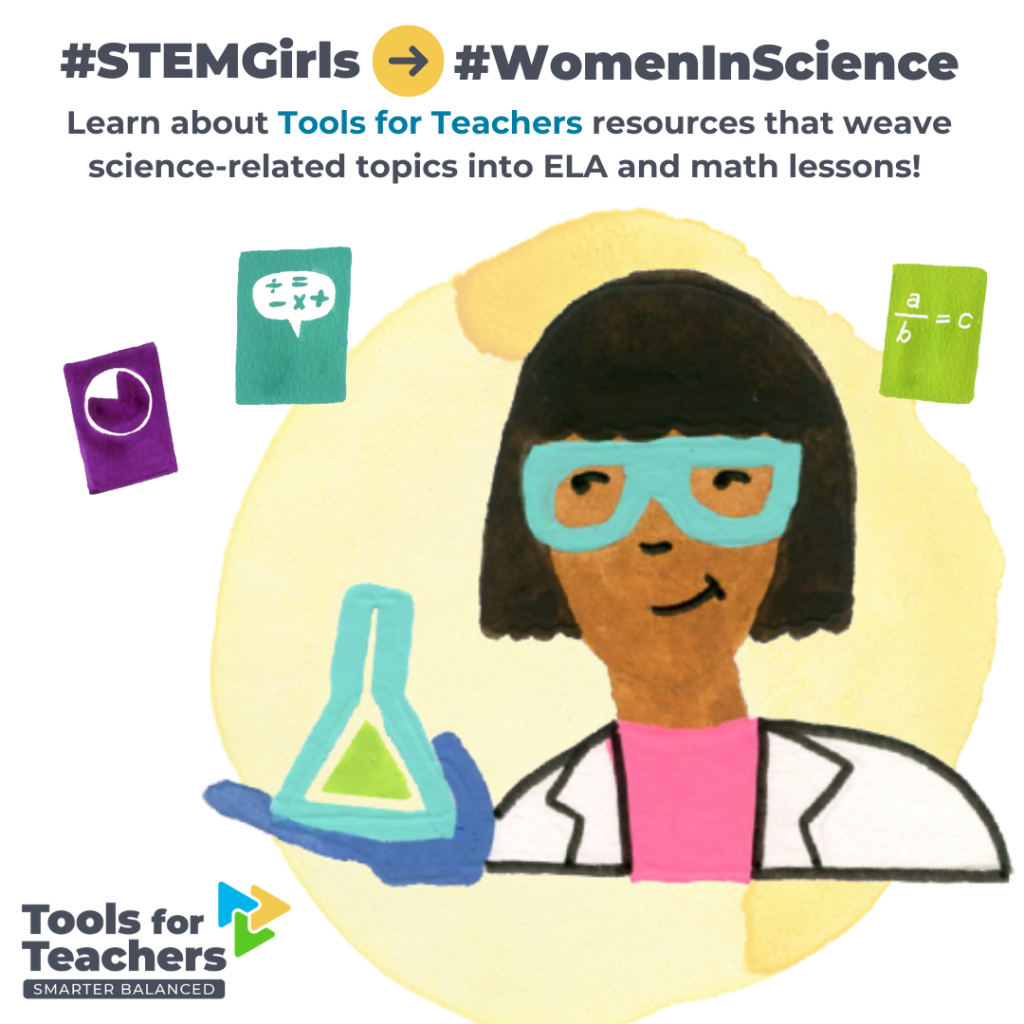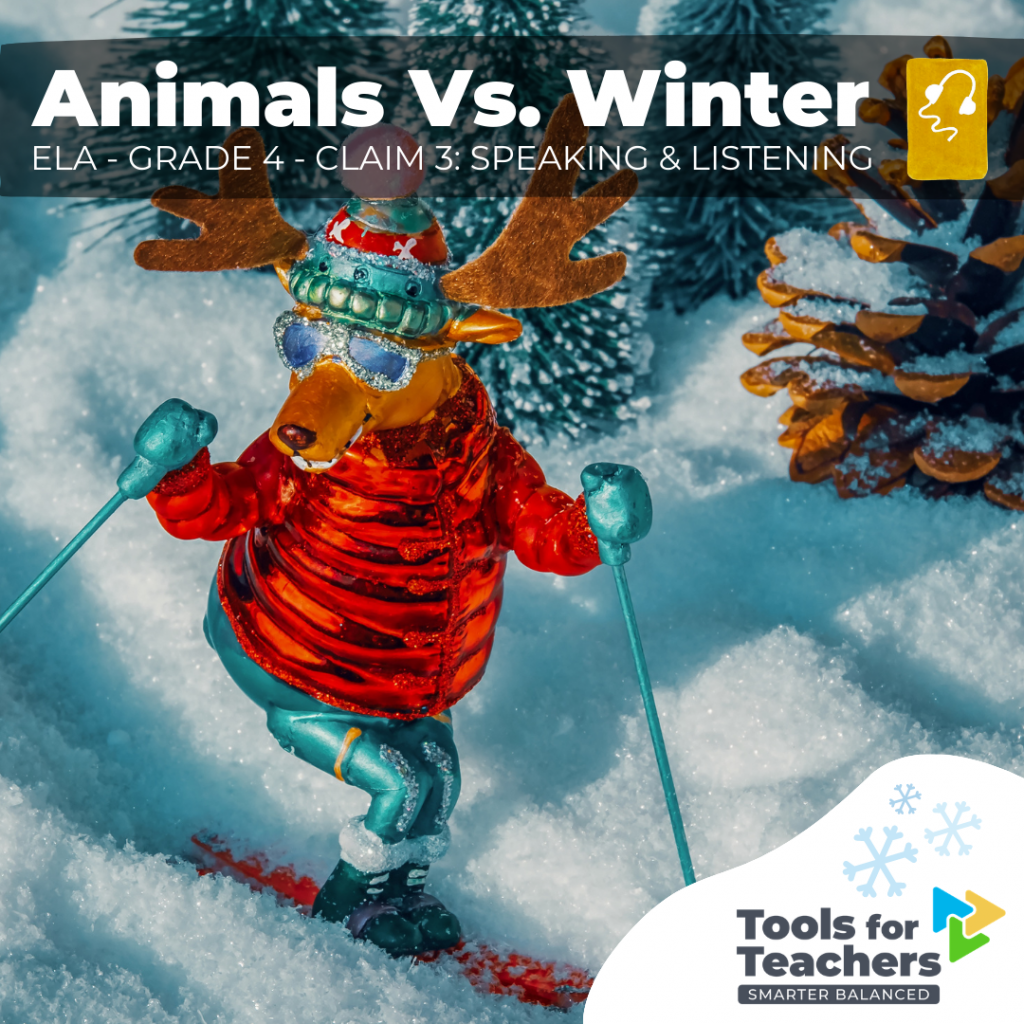Tools for Teachers Instructional Resources Support STEM Learning
Encourage #STEMGirls to Become #WomenInScience through Science-Related Lessons
According to the United Nations (UN), less than 30 percent of researchers worldwide are women. The UN cites UNESCO research from 2014-16 that states, “Globally, female students’ enrollment is particularly low in ICT (3 percent), natural science, mathematics and statistics (5 per cent) and in engineering, manufacturing and construction (8 percent).”
What can we do to reverse this trend and help women achieve full and equal participation in STEM fields? We need to break historic biases and stereotypes that steer girls away from math and science-related studies.

One way to get students excited about STEM is to weave science-related topics into classwork that may not traditionally focused on these fields, and it’s not as hard as you may expect. For example, Tools for Teachers provides ELA lessons that focus on research/inquiry (claim 4), and analyzing information/sources (target 3). The topics are interesting too–think dangerous ocean animals and exploring why it rains (a question every kid asks at some point!).
Here are a few instructional resources (lessons and activities), among many, that are science-related in both ELA and mathematics.
Sort the Science Sources!
Grade 5 • English Language Arts
Claim 4: Research/Inquiry • Target 3: Analyze Information / Sources
Ecosystems rely on particular components in order to have matter move effectively through them. Prior to researching decomposers, producers, and consumers, our class needs to become researchers and investigate the elements of the effective ecosystems. Students will review print and digital sources to determine which sources will provide the most relevant information about decomposers, producers, and consumers.
The Deadliest Catch
Grade 4 • English Language Arts
Claim 4: Research/Inquiry • Target 4: Use Evidence
This research activity encourages students to examine an article on a dangerous ocean animal. The students will identify the main idea and supporting details about what makes the animal dangerous.
Constructing Scientific Explanations Using Defining Sentences
Grade 5 • English Language Arts
Claim 2: Writing • Target 8: Language and Vocabulary Use
This fifth-grade lesson activity has students constructing defining sentences using previously learned science vocabulary. Students consider the specific vocabulary needs of their audience in explaining a scientific phenomenon: Why does it rain?
To Know a Dog – Analysis Within and Across Text
Grade HS • English Language Arts
Claim 1: Reading • Target 12: Analysis within or Across Texts
Through reading an article about the little-known abilities of canines, students will look for text-based evidence and analyze the connections between ideas as they relate to the thesis. The connections will be identified along with how they support the argument that dogs are amazing in many diverse ways.

Animals vs. Winter
Grade 4 • English Language Arts
Claim 3: Speaking & Listening • Target 4: Listen/Interpret
Students will listen to an oral presentation about “Animals vs. Winter.” Students will determine the central idea and supporting details of the oral presentation.
Life with Lily: Ordering and Comparing Rational Numbers
Grade 6 • Mathematics
Claim 1: Concepts and Procedures • Target D: Apply and extend previous understandings of numbers to the system of rational numbers
Students will learn how to order and compare rational numbers using inequality statements through real-life experiences with Lily! Using examples of earning an allowance and spending money and tracking plant growth and temperature changes with science club, students will learn how to use a number line to help compare rational numbers.
Measure of Molecular Motion
Grade 7 • Mathematics
Claim 1: Concepts and Procedures • Target B: Apply and extend previous understandings of operations with fractions to add, subtract, multiply, and divide rational numbers
This lesson is intended to help you assess how well students are able to understand and use directed numbers in context. It is intended to help students understand how to add and subtract positive and negative integers.
Lake Chelan Data and Outliers
Grade HS • Mathematics
Claim 1: Concepts and Procedures • Target P: Summarize, represent, and interpret data on a single count or measurement variable
Students will explore the effects of adding and removing points (including possible outliers) on the shape, center, and spread of a contextualized data set. They will do this work within a Desmos Activity called “Lake Chelan Data and Outliers.” The data set includes daily temperature readings taken at Lake Chelan in Washington State.
BONUS! Interim Connections Playlists can supercharge (and streamline) your process for identifying next instructional steps for individual students. Learn more about how you can use Connections Playlists to support your teaching practice in this printable handout. As a bonus, we included an ELA playlist that focuses on research/inquiry and provides information on how to differentiate lessons for each student’s performance level:
INTERIM CONNECTIONS PLAYLIST – Research
Grade 6 • English Language Arts
Claim 4: Research/Inquiry • Targets 2, 3, and 4
This Interim Connections Playlist focuses on all three Research targets. Students will engage in research/inquiry to investigate topics, and to analyze, integrate, and present information.
